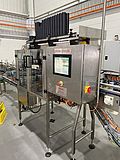WDS Components Parts Ltd. has released a comprehensive range of industrial shock absorbers, designed to help improve product handling in manufacturing applications and in automated package handling. The shock absorbers are designed to smoothly and gradually stop their movement without causing bounce-back or other unwanted effects, self-compensating for varying loads.
Features and advantages
WDS industrial shock absorbers are maintenance free and sealed for life, so are fit- and-forget items that can make a significant difference to overall productivity. They are available in two variations, adjustable and self-compensating and come in a range of sizes and capacities. Adjustable shock absorbers have a single variable orifice connected to an adjusting wheel with a graduated scale. A few strokes after initial installation the unit can be tuned to match the needs of the application. Once the absorber is set, the adjusting wheel can be locked using a removable key, while the scale allows simple, fine adjustment. WDS's adjustable shock absorbers are made to a robust steel design with rubber end caps and can working in a temperature range from -10°C to 85°C. Their stroke length varies from 15mm to 50mm.
Speed, mass and energy capacity
Dynamically their operating speed varies from 3.2m/s to 3.6m/s. They have a maximum effective mass of 120kg to 1400kg, which leads to a maximum energy capacity per cycle of 22Nm to 150Nm. The result is a maximum hourly energy dissipation of 26,400Nm/hr to 10,8000Nm/hr depending on size.
Self-compensating shock absorbers
WDS's self-compensating shock absorbers are of a slightly more complex design, using a double tube configuration to create the oil chamber. In use, hydraulic oil is forced though an array of small orifices in one tube as the piston retracts. The spacing and design of the orifices maintains a constant pressure on the piston throughout the full stroke so that deceleration is linear.


















